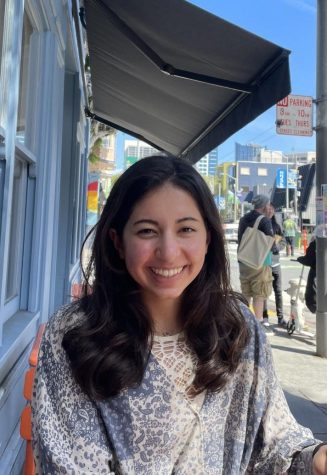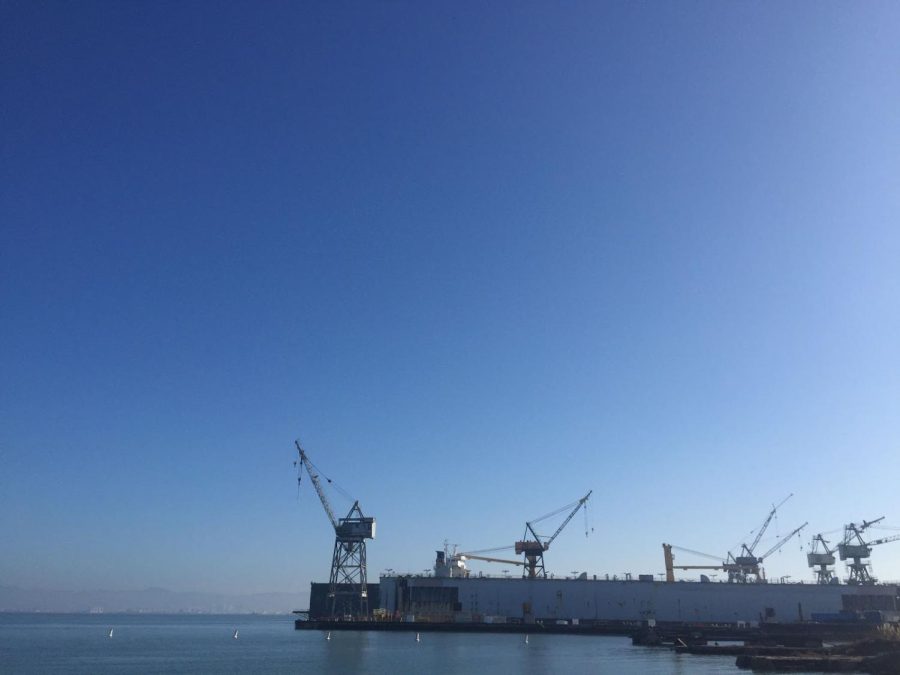Green Matters | A Local Look: Bayview Hunters Point
Industrial cranes disrupt the horizon of the San Francisco Bay.
This is the second installment of Green Matters, a column about climate change and its impacts. Find the first article here.
The San Francisco Bay Area, although often seeming removed from the present impacts of climate change, is in fact already facing some dire consequences. From poor air quality to toxic waste, global warming is staring us in the face.
In one neighborhood in particular, an industrial environmental footprint means a microcosm of exacerbated health and equity impacts.
For Bayview Hunters Point, in the southeastern corner of San Francisco, “climate change” is synonymous with many current struggles. Many parts of the historically industrial neighborhood were not even actual land before the 1900s. Hunters Point Naval Shipyard, Candlestick Park, the estuary formed by Islais and Precita Creeks, and Heron’s Head Park all used to be part of the Bay, but throughout the 20th century were filled by construction projects using rocks and sand from nearby Potrero Hill.
From 1945-1974, Hunters Point was used as a shipyard, and during that time also housed the Naval Radiological Defense Laboratory. The NRDL engaged in a variety of radioactivity tests, including injecting animals with radioactive materials. The Navy contaminated the area with radioactive and chemically dangerous pollutants, leaving a legacy of generational health inequities for the local community and a trail of monetary shortcuts with damaging repercussions.
Among their activities, “Operation Crossroads” involved detonating two nuclear bombs in the Pacific, and then docking the Navy ships that had absorbed radiation from the detonations back at BVHP to be cleansed of radiation with sandblasting. Leftover fuel on the ships, still radioactive, was burned on the site, and the ships (unsalvageable) were later sunk at the Farallon Islands.
Today, and since 1989, the shipyard is an EPA Superfund Site. The Navy was charged with cleanup, but Tetra Tech, the group hired to oversee the decontamination, falsified soil samples, concealing the true toxicity of the land. Bordering the Bayview neighborhood housing roughly 35,000 people, these contaminants do not remain without cost. Community groups continue to fight for Tetra Tech and the Navy to be held responsible, and for action to truly decontaminate the area, often with little success.
This may be in part due to the demographic makeup of the neighborhood. It is 80% people of color, and due to racist housing policies following the second World War, is home to the largest population of Black individuals in all of San Francisco. Bayview Hunters Point, as it seems, is a case of severe environmental racism. Especially taking into account the significantly more thorough and honest cleanup of other contaminated but more affluent San Francisco neighborhoods.
With all of this in mind, let’s turn to sea level rise.
By 2050, some projections estimate a water level rise of nearly two feet in the Bay Area. For the Bayview area, the most pressing threat posed by sea level rise is the spread of these buried contaminants: as water rises, so will groundwater, which will further disperse the dangerous chemicals.
As water level averages rise, so will the highest high tides and storm surges, increasing the risk of contaminated sites flooding. Because so much radioactive waste has been left or buried along the shoreline, it is especially threatening. Even worse, groundwater near the shore will rise with sea levels, mobilizing contaminants that would otherwise remain stationary in the soil. These contaminants could spread and damage nearby infrastructure or interact with other chemicals remaining in the ground.
Presently, Bayview residents face significantly higher rates of cancer and asthma than other parts of the City, along with other health consequences. Should we continue to turn a blind eye on this decades-old issue, the inequalities will only further exacerbate the challenges the low-income, POC community faces.
The practice of burying waste, of leaving it near communities with fewer means to fight and win legal battles, is unsustainable in the long term. From now on, humans need to find more effective ways to prevent contamination threats like that of Bayview Hunters Point before the fact, and to fully clean up without taking shortcuts for short-term economic gains.

After three years of writing and editing for the Emerald, Atessa is serving as Editor-in-Chief during her final year at SHC. She’s an avid bookworm and...






